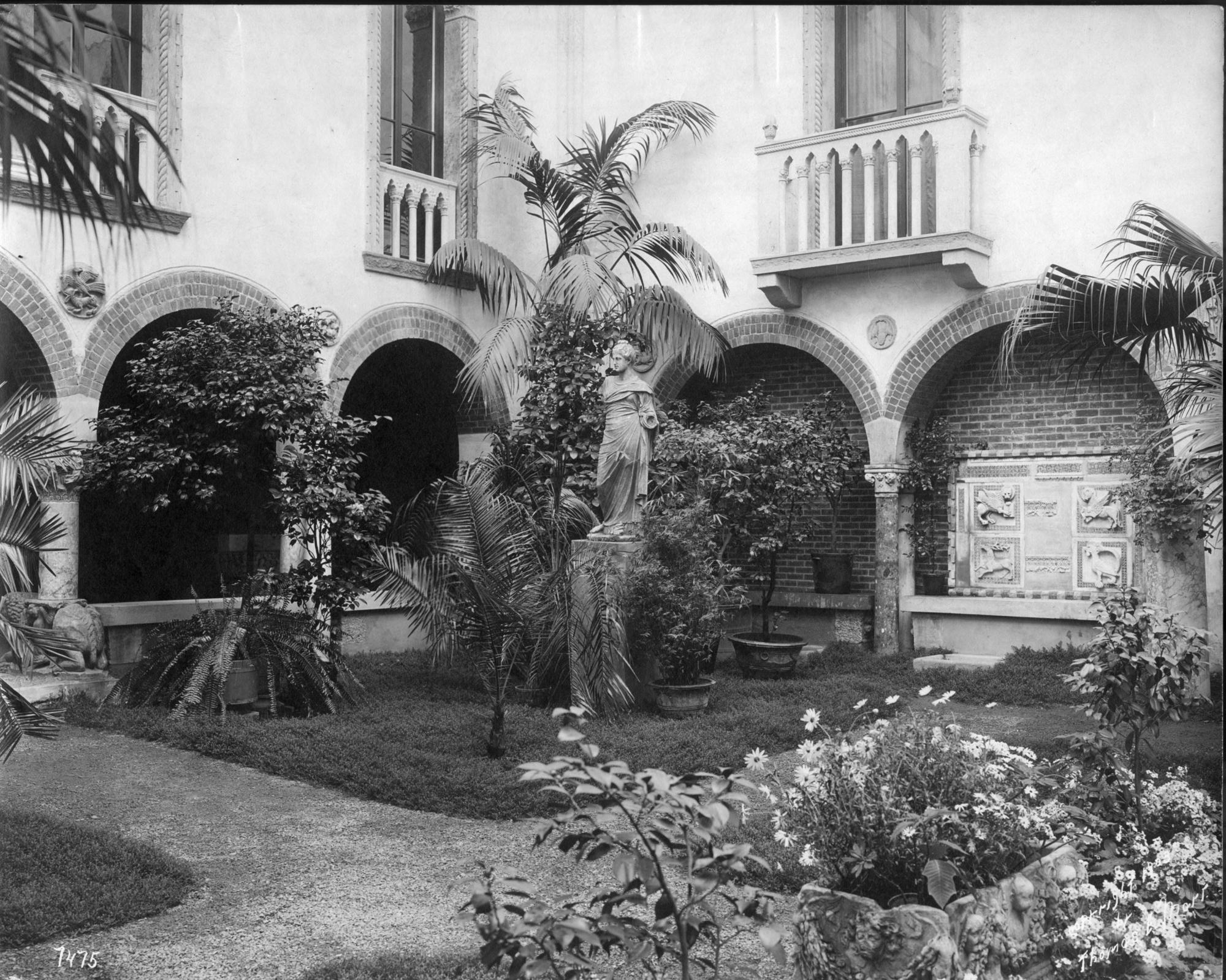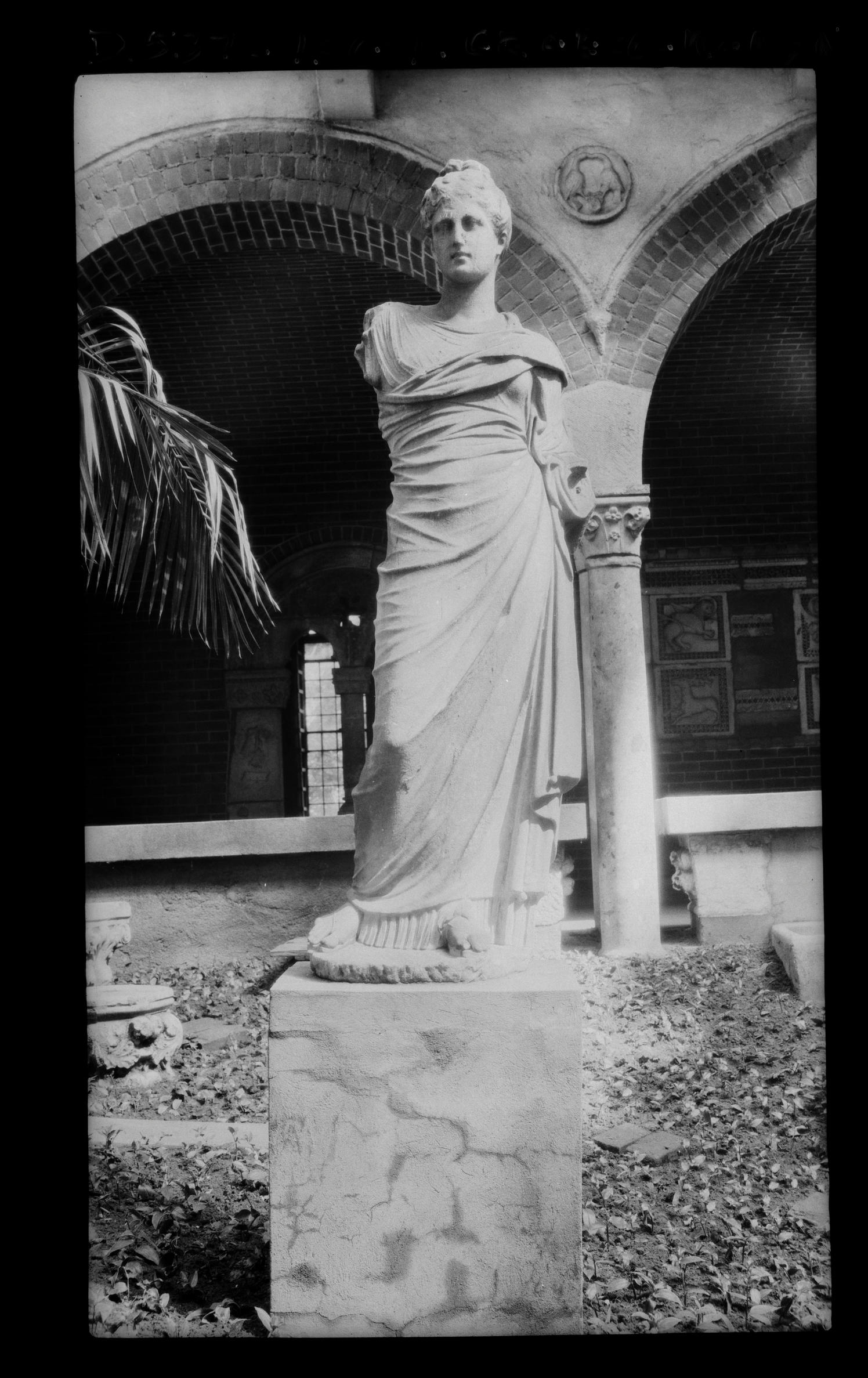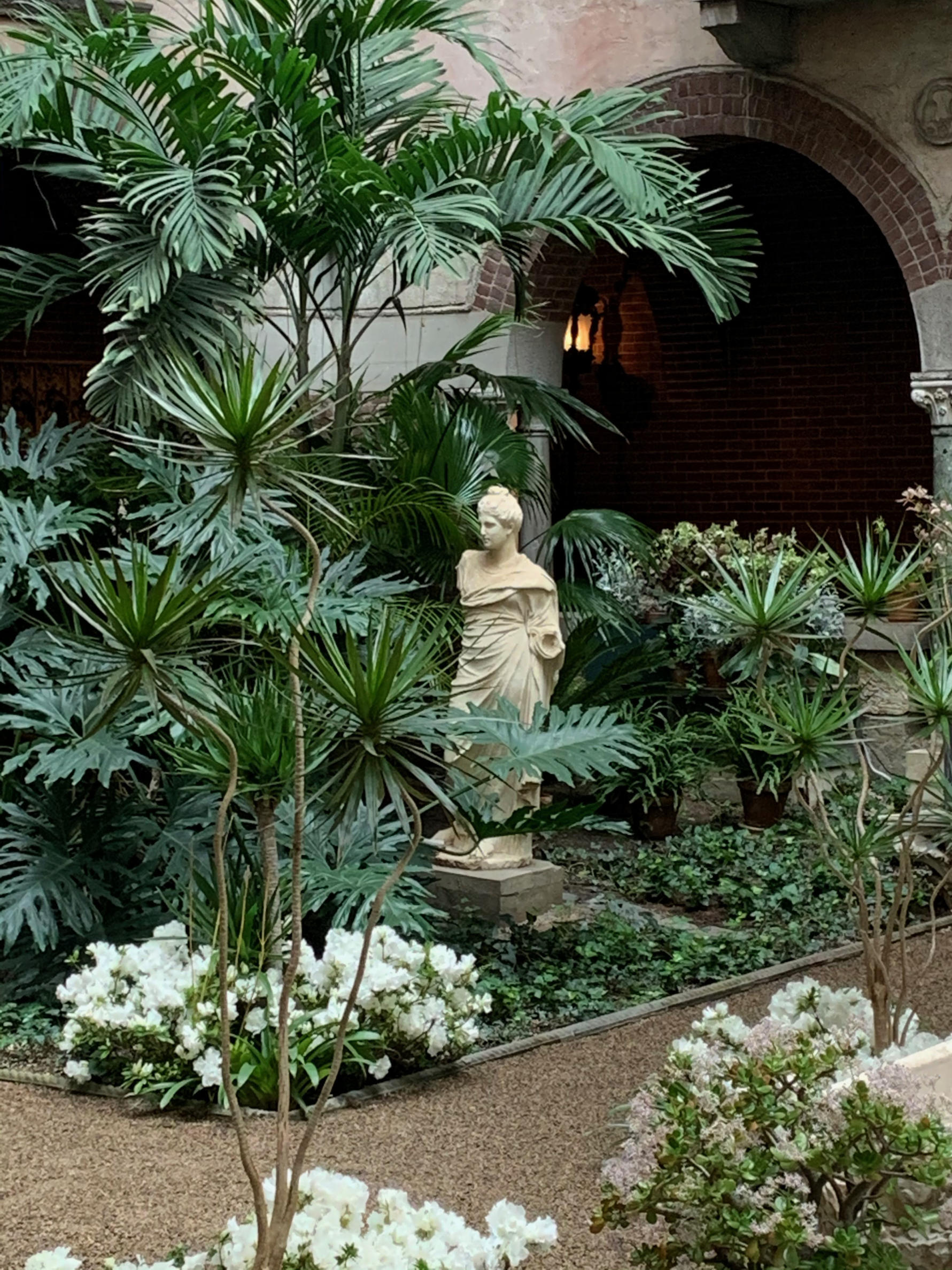In May 1901, archaeologist Richard Norton wrote to his friend Isabella Stewart Gardner that he had found an impressive sculpture of the goddess Persephone, the goddess of plants and the underworld. “I do not know whether it will please you or not but from the point of view of Greek sculpture you ought to have it.”* Gardner was pleased enough to purchase the sculpture and eventually placed it high in one corner of the Courtyard in her museum.

Greek, A Goddess (Persephone), about 20 BC - 50 AD in the Courtyard in 1903
Gardner transformed the Courtyard of her museum into an open-air gallery of antiquities, evoking the private gardens of ancient sculpture assembled in Renaissance Rome. In Boston, Persephone—dating from about 20 BC to 50 AD is part of a group of artwork depicting mythological heroines, including Artemis and Medusa. The gender dynamics are likely deliberate: the Courtyard is dominated by women.
Persephone is the goddess of the underworld, and even in her new Boston home trouble brews beneath the surface. Gardner built her museum on landfill. While workers constructed a foundation of sturdy piles to support it, the inner Courtyard is different. No such support exists and, in some areas, the ground level has sunk up to a meter, just over three feet. Persephone is getting a little too close to the underworld and the surrounding plant life due to shifting of the soft ground beneath the sculpture’s pedestal.
Gardner herself witnessed some of this settling of her Courtyard, too. See for yourself the contrast between her height when Gardner opened the Museum in 1903, and in this photo taken shortly after her death in 1924.

Greek, A Goddess (Persephone), about 20 BC - 50 AD in the Courtyard in 1927-1931
Persephone stands several feet below her original installation height and leans at an angle.

Greek, A Goddess (Persephone), about 20 BC - 50 AD in the Courtyard in 2020
In the summer of 2020, our conservation team and other experts will return this sculpture to the level that Isabella intended. This project faces a few challenges, however: while Persephone may be the embodiment of classical grace, she weighs approximately 800 pounds, and her carved surface remains incredibly fragile. Professional riggers will need to gently lift Persephone from her pedestal and deliver her to the Museum’s fourth-floor Poorvu Family Conservation Center. General contractors working with a geotechnical engineer—someone who works with the earth, specifically—will build a stable new base that will prevent Persephone from sinking any more. The base will then await Persephone’s return so that she can take her rightful place among the other figures in the Courtyard. Visit the Museum soon to see Persephone rise from the Underworld and preside over the luxurious vegetation that fills the Gardner Museum Courtyard!
You Might Also Like

Explore the Museum
Visit the Courtyard

Explore the Collection
Roman, Mosaic Floor: Medusa, 117-138 AD

Explore the Collection
Roman, Artemis or Amazon, late 1st century
*Richard Norton, Letter to Isabella Stewart Gardner, 1 May 1901. Isabella Stewart Gardner Museum, Boston